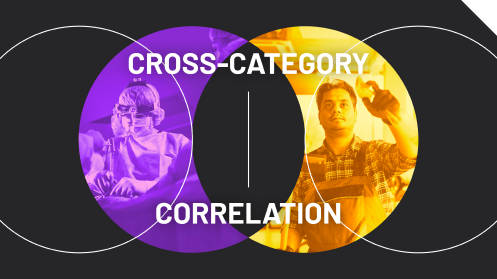Data-driven Essentials to Drive Post-Merger Value
Mergers and acquisitions are a hot topic in B2B distribution markets, with distribution and supply M&A volume predicted to continue to rise in 2022. With volume increasing and resources constrained, leveraging data to drive post-merger value is critical.
For example, according to a recent PwC article published by Industrial Distribution, the impact of the current supply chain crisis, pending policy changes, and the amount of available capital means Industrial Supply M&A will continue at a brisk pace well into the new year. This will afford businesses the opportunity to transform, grow, and create value amongst all the COVID-related challenges and disruptions the industry has experienced.
Yet research suggests that one of every two post-merger integration (PMI) attempts is categorized as poor or failing. This failure rate is concerning given post-merger integration is critical to realizing deal value. At Precision, we know that data analytics and insights are a key component to driving post-merger value; identifying overlap, maximizing synergies, minimizing risks, and optimizing the business throughout the integration process. Therefore, in this blog we’ll share some data-driven essentials to optimize the post-merger integration process.

The importance of post-merger integration planning
Closing on an acquisition can be a challenging process, but the integration process is often more difficult. Capturing the value of the deal is a balancing act that requires close attention to management, employees, customers, and shareholders. On the front end, the evaluation process helps identify potential synergies and opportunities in the financials, projections, and business models of the companies. Once a deal is agreed to, companies must pivot to integration planning to ensure opportunities are realized.
Post-merger integration is essentially the process of unifying two entities and their assets, people, tasks, resources, and processes in a manner that creates the most value for the future of the company. Stakes are high, and time and resources are often constrained. The volume of unstructured data can create a logjam in analyzing synergy opportunities that can drag on for months after the transaction closes. These pitfalls put success and profitability at risk.
A well executed plan will:
- Accelerate integration timelines after the transaction closes
- Identify and quantify transactional synergies
- Prevent duplication / overlap
- Reduce risks
Optimizing post-merger integration with data
Because every M&A deal is unique, the path to create value is different for every company. There are a plethora of M&A playbooks and best practice guides on the market to help navigate the process, but there is no one-size fits all approach to successful post-merger integration. There are, however, tools and data-driven methodologies that can lead to smoother integration and the successful capture of synergies. A truly effective integration plan should pave a defined path from your goals to impending results and rely on quantitative analysis for fact-based planning, decision-making, measuring, and monitoring.
Big data analysis can lend smarter insights and increased confidence and can be leveraged in M&A environments for faster integration and successful post-close performance. Also, data and insights can be used to quantify transaction synergies, drive rapid due diligence, accelerate integration, and enable immediate execution on value bearing overlap opportunities.
Data-driven essentials to drive value
Some examples to optimize your post-merger integration and drive value with data include:
Customer Overlap Analysis
Identify shared and non-shared customers, validate transactional synergies and gaps, and quantify your greatest revenue growth opportunities.
Sales Resource Optimization
Align combined sales resources with target market opportunities in a manner that optimizes go-to-market initiatives.
Product & Vendor Overlap and Opportunities
Quantify product overlap down to SKU level to decide whether to continue, combine, or eliminate the products and/or services offered. Quantify vendor overlap to support deal negotiations.
Warehouse and Inventory Synergies
Quantify opportunities for inventory consolidation between warehouses, reducing working capital, increasing service rates, and reducing stock-outs.
Price and Cost Analytics
Reconcile differences in pricing, discounts, rebates, contracts, incentive programs, etc. to arrive at net-net cost differences and quantify and prioritize margin improvement opportunities across the organization to create value and cost savings.

M&A and divestitures can fuel growth, but a clear strategy, sound diligence, and effective and rapid integration are crucial. With known post-merger failure rates alongside the pressures of today’s economic environment, companies are looking for new, more effective ways to get the integration work done. Particularly, when financial exposure is significant, data sets are large or complex, and multiple stakeholders are involved, the need for expert valuing, modeling, and analyzing business interests becomes increasingly critical.
Data analytics can help mergers succeed by lending smarter insights and increased confidence to the process. Whether you have the in-house resources or need M&A Data Services from an external specialist (an unbiased, third-party data partner), data analytics can play an important role in the right due diligence, a well-executed integration plan, and ultimately ensuring the deal lives up to its predicted value.





